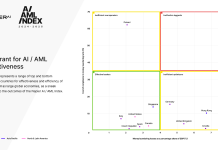LexisNexis has launched new product initiatives for banks to comply with global economic sanctions regulations and financial crime risks.
Name screening, while necessary to adhere to global regulatory requirements and to protect enterprises from enforcement risk, is an area that has presented significant challenges in the form of labor-intensive human processes, steadily increasing costs and meager rates of accurate risk identification.
The rise of machine learning and other AI processes are driving economic sanctions and financial crime risk identification. However, despite this approach slowly gaining regulatory acceptance in the financial services space, LexisNexis said that further innovation and adoption is critical to ‘rebalance cost against compliance risk’.
Illicit financiers rarely use names that can be found on government watch lists or in adverse media and they often fabricate, steal or obfuscate true names to avoid detection.
Daniel Wager, vice president, global financial crime compliance, LexisNexis Risk Solutions, said: “Digital identity attributes present the greatest opportunity to more accurately and efficiently identify financial crime risk arising not from individuals named on government lists, but from the digital footprints that illicit financiers and other bad actors leave behind.
“In a global environment, where far more interactions with customers occur in the digital realm than face-to-face, names are only one of hundreds of attributes that can be analysed to identify potential risk.”
The LexisNexis Risk Solutions True Cost of AML Compliance study of China, Hong Kong, Indonesia, Malaysia, Taiwan and Singapore found that 33 per cent of anti-money laundering (AML) compliance costs are made up of watch list activities, including periodic screening, sanctions operations, and KYC processes. Little innovation has occurred to disrupt the way that banks comply with these global regulations.
However, through the analysis of hundreds of digital identity data points, further enhanced through the use of contributory databases and consortia, such as LexisNexis Risk Solutions recent acquisition of the ThreatMetrix Digital Identity Network, banks and non-bank corporates can identify enterprise risk in near real-time.
As a result, organisations can use fewer expensive and highly-trained resources to more accurately assess and control economic sanctions and other financial crime risks across their enterprise, in a fraction of the time required today, according to the company.
Copyright © 2018 RegTech Analyst






